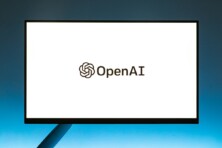Although the use of buy buttons saves US consumers as much as 148 million hours a year, many online merchants have introduced friction into the checkout flow

Buy buttons save US customers 148 million hours annually: PYMNTS. Source: pexels.com
According to the 2022 Buy Button: Accelerating Checkout Optimization research conducted by PYMNTS, online shoppers complete their purchases 50% faster, if they use buy buttons vs regular methods.
Buy buttons are shortcuts to checkout via a payment platform. They skip the typical “add-to-cart” and payment steps, minimizing the final and most critical obstacle to converting a window shopper into a paying customer.
The survey of 808 leading online retailers in the U.S. across 17 industry segments also revealed that “Buy” buttons are more popular among small eTailers than large ones. Namely, 87% of small online merchants support at least one buy button, while only 73% of large merchants do the same.
Although the use of buy buttons saves US consumers as much as 148 million hours a year, many online merchants have introduced friction into the checkout flow. About 30% of the respondents require customers to provide personal information while checking out via buy buttons. That makes the experience less streamlined for buyers, causes average checkout times to spike by 13% and introduces privacy concerns.
Furthermore, the report investigated the related buy now, pay later (BNPL) options. It appears that the vast majority (88%) of eTailers offer at least one BNPL option. Among this cohort, 82% provide one of PayPal’s BNPL options. Therefore, PayPal buy buttons serve as the primary gateway for BNPL.
SEE MORE:
Ecommerce Investing Insights: How to Invest in High-Growth Companies
China to remain the global e-commerce leader with over $2 trillion sales in 2022: GlobalData
BNPL users to reach over 900 million globally by 2027: Juniper Research









